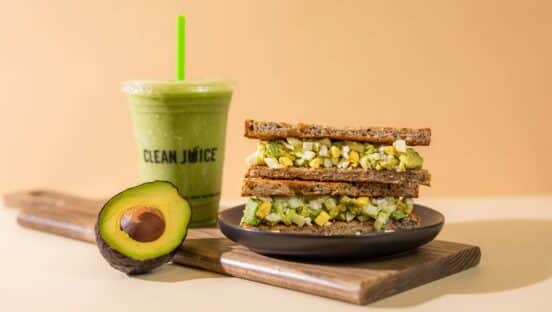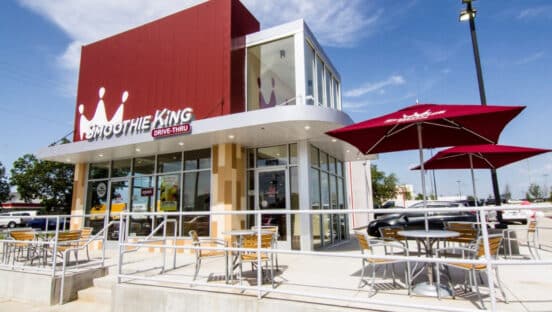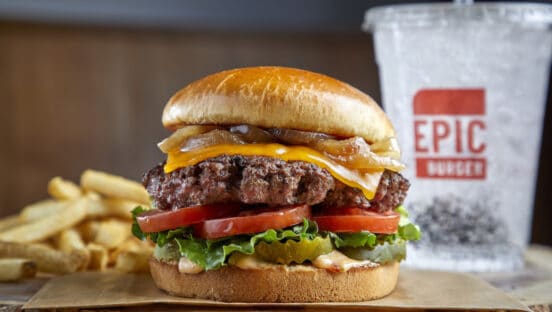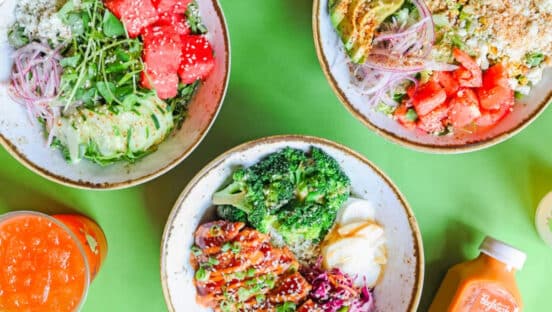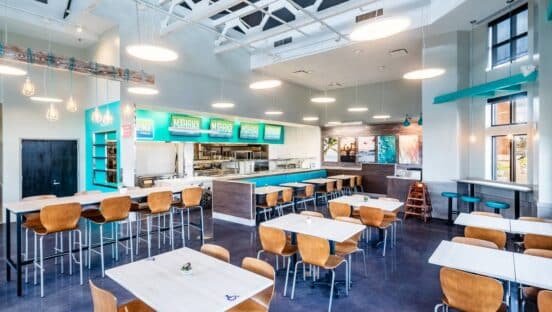Fourteen years ago, Randy Garutti and the Shake Shack team closed shop for the day at their Madison Square Park location, the brand’s first—and only—store at the time. They just achieved what executives thought unthinkable. It was Shake Shack’s first $5,000 day, a milestone “a bunch of fine-dining leaders” couldn’t picture when they put burgers, hot dogs, fries, and shakes on the menu of a fast casual.
This past quarter, Shake Shack scored its first $2 million day. Since its IPO, when the chain exited 2014 with nearly $120 million in revenue, it has increased the figure by nearly 300 percent. And although many restaurants and companies say this, it holds real weight with Shake Shack: As far as it’s progressed, the chain is just getting started spreading one of the more profitable business models in the country across the map.
This past year, in CEO Garutti’s words, Shake Shack completed the most ambitious year in company history. It built 49 restaurants—34 company-operated and 15 licensed—across 27 states and 13 countries. Of those openings, 20 (17 corporate) took place in Q4. Seven in just the last two weeks of the fiscal calendar.
Shake Shack also entered eight fresh major markets in 2018, including Denver; Charlotte, North Carolina; and Seattle. In fact, more than 80 percent of Shake Shack stores are now located outside of New York City.
Last year’s growth represented a net 30.8 percent increase in Shake Shack’s systemwide footprint, bringing the total to 208 restaurants. Broken up, it’s 124 domestic company-run stores, 12 domestic licensed units, and 72 international licensed locations.
And now for the future.
Shake Shack expects to grow another 50 percent and deliver $700 million of total revenue by the end of 2020 (total revenue jumped 28 percent to $459.3 million in 2018). As big as 2018 was, 2019 promises to top it with 36–40 new company restaurants. Salt Lake City, New Orleans, and Columbus, Ohio, are on deck. Between 16–18 licensed restaurants are scheduled this year as well, which would move the licensed and company-run split to 40/60. Shake Shack also plans to enter three new countries.
“We know there is significant runway for growth ahead, and we’re building this company for a long and bright future,” Garutti said in a February 25 conference call.
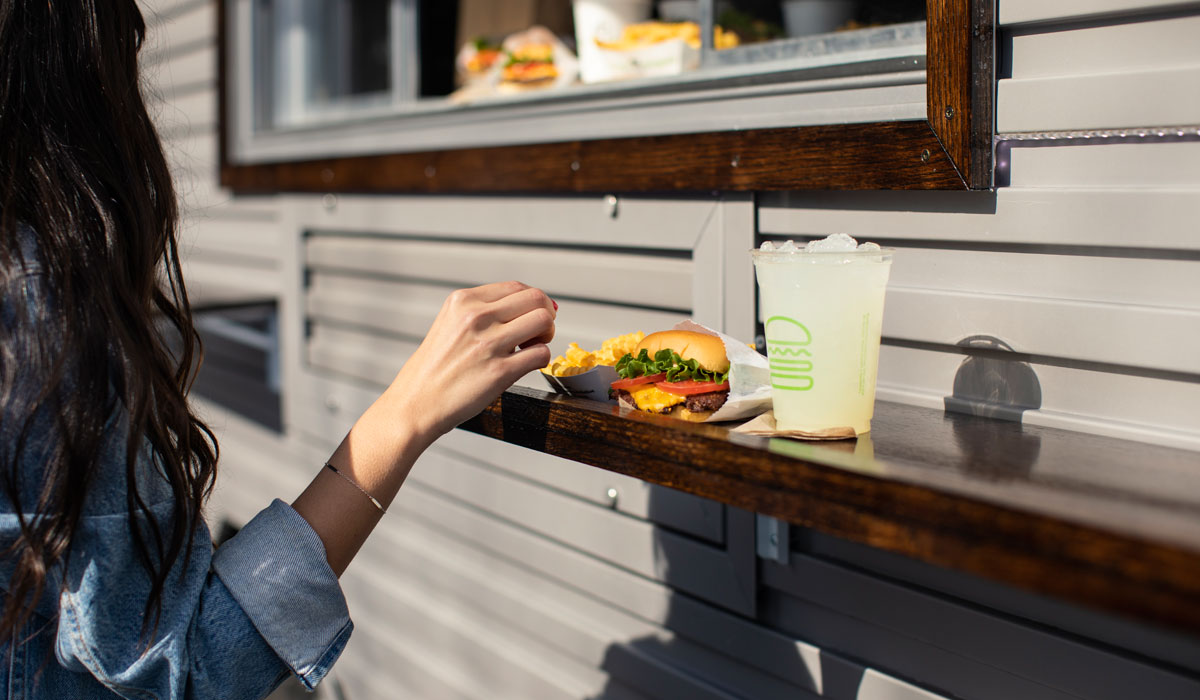
A sales boost, and the evolution (and cost) of growth
Shake Shack closed fiscal 2018 on a high note from a top-line perspective. Its same-store sales gains of 2.3 percent were the best in more than two years. Comps climbed 0.8 percent in the year-ago period. Q4’s run was driven by a 2.6 percent increase in price and sales mix partially offset by decreased guest traffic of 0.3 percent. Traffic fell 2.7 percent for the full year. Average weekly sales for domestic company stores also dropped to $81,000 compared to $85,000. This has been a common theme during Shake Shack’s growth as it adds lower-volume stores into the base. While that might sound negative, opening in Virginia isn’t like opening in Manhattan. Sophomore restaurants in new markets also tend to generate lower volume than first-to-market locations in Year 1. AUVs for all domestic stores were $4.4 million this past year, down from $4.6 million in 2017. By the end of 2019, Shake Shack expects the number to decline to $4 million to $4.1 million.
The change is a reflection of Shake Shack’s broader growth, CFO Tara Comonte said, and one the company forecasted when the expansion really began.
Shake Shack also saw its operating profit margin dip to 22.5 percent in Q4, down 2.7 percent, year-over-year. The hit comes from costs related to growth, the company said, as well as accelerating labor pressure. Shake Shack expects similar impacts on operating profit in 2019 as it continues to expand and shoulder construction costs, and labor remains challenged.
But Comonte said Shake Shack would keep a long-term view on costs. The same is true of labor. “We believe in building the right way for the long term and you should expect to see us continue to deploy spend in our people, in our guest experience, and in our underlying technology that we believe will deliver both leverage and compelling long-term returns for our shareholders,” Comonte said.
Shake Shack created nearly 2,000 jobs last year and promoted upward of 1,100 employees internally. It’s also issuing additional equity awards of $10,000 to each of its general managers in Q1 2019—the first time it’s done so since the IPO.
“You see us making continued new investments in general managers and all of our managers, frankly,” Garutti said. “But that will be something I would imagine will be the No. 1 challenge forever in our business. We’re in a people-led business. It’s also our sweet spot. It’s also what we do better than anyone and it’s how we’re going to continue to invest so that we have restaurants that are standing with great leaders decades from now. But it’s never going to be easy.”
What’s also worth considering is the evolution of Shake Shack’s multi-format real estate strategy. The brand’s portfolio is as varied by build and fit as they come in fast casual, similar in some ways to how Starbucks populated dense urban locations during its boom. There are freestanding pads, urban high street stores, and shopping centers, among others. Shake Shack even opened its first premium food court location in Miami recently and rolled out two food trucks in New Jersey and Atlanta. The first booking served Maroon 5 after the Super Bowl.
“Adding more channels can, at times, add operational complexity to our Shacks, and we’ll continue to review and evolve our kitchens, our order and pick-up areas, our packaging to ensure a great Shack experience in an omnichannel world.” — CEO Randy Garutti on digital changes.
There are currently 10 Shake Shacks in airports (seven in the U.S. and three internationally). Garutti said, “there is significant ongoing opportunity for growth in the airport space.” Shake Shack has a stadium venue in Citizens Bank Park in Philadelphia, and plans to expand across that channel as well.
The international pipeline is robust, too. Shake Shack is opening its first international office in Hong Kong in 2019 and is still in the first chapter of its Mainland China growth, “a market where we see incredible opportunity for our brand in Shanghai and beyond,” Garutti said.
Growth support
To further prove how serious Shake Shack is about this impending growth, take a look at some recent executive changes. In mid-February, the company promoted Andrew McCaughan, formerly VP of development, to chief development officer. McCaughan joined the company when there were just three units. He previously worked for restaurateur Rick Bayless.
Michael Kark, former VP of global licensing, was named chief global licensing officer. He’s charged with overseeing Shake Shack’s expanding licensed partnerships.
Dave Harris took on the role of chief information officer, responsible for overseeing all aspects of technology at Shake Shack. He recently served as VP of digital technology at Newell brands.
Lastly, Jay Livingston became Shake Shack’s first chief marketing officer. His previous post was CMO at BARK, the makers of BarkBox.
More on the digital changes
If you look back two years, Shake Shack was pretty uniform in its service model. If you wanted to get a burger, you had to walk into the restaurant and get in line. You picked up a buzzer and took a seat. Since, Shake Shack has created five ways to access its food. Guests can still walk in, of course, but now they can also use a self-serve kiosk in some locations; access the brand’s newly refreshed mobile app; tap its recently launched web-ordering platform; or dial up one of Shake Shack’s delivery pilots via third party.
The process hasn’t always been smooth for Shake Shack. Kiosk-only locations, for example, were something the brand pulled back on when it realized there was still a demand for cash in some units. “Adding more channels can, at times, add operational complexity to our Shacks, and we’ll continue to review and evolve our kitchens, our order and pick-up areas, our packaging to ensure a great Shack experience in an omnichannel world,” Garutti said.

Among the app changes, Shake Shack introduced ASAP ordering early in 2017, which now accounts for 70 percent of all orders placed through the platform. Recently, it moved time slots from the beginning of the checkout flow to the end, and removed the countdown timer to allow guests to browse and check out on their time.
Also, Shake Shack noticed a drop off from opening to checkout. So it redesigned the app with a series of sprint-based designs to reduce the number of taps it takes to purchase by roughly 50 percent.
Some other changes: Guests can now favorite past orders to quickly reorder, if desired. The app redesign focuses on personalization with the ability to strategically message guests based on where they are in the lifecycle with things like app-exclusive menu items, special offers, and local deals.
Digital channels continue to show a higher average check, Garutti said. And on delivery in particular, he added, “for the most part, we’re very happy with the guest demand for delivery. We’ve got some new packaging that started about a month ago. So we’re working on some of the new things for just really better guest experience, better food safety and making sure we can do a better job in the Shacks for anyone, no matter how you’re getting your Shack.”


